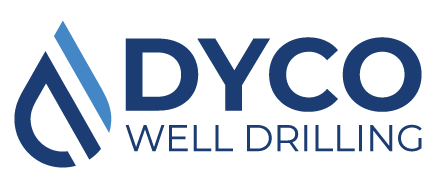Water well drilling is a complex process that requires a combination of art and science. It involves locating and accessing underground water sources to provide a sustainable water supply for various purposes, such as agriculture, drinking water, and industrial use. Whether you are a professional water well driller or simply curious about the process, this comprehensive guide will take you through every step of the art and science behind professional water well drilling. From understanding the geological formations and hydrology to selecting the right drilling equipment and techniques, this guide will equip you with the knowledge and skills to ensure successful and efficient water well drilling projects. Get ready to dive into the fascinating world of professional water well drilling and discover the secrets behind this essential resource.
Understanding the importance of water well drilling
Water well drilling is a crucial process that plays a significant role in providing access to clean and safe water sources. It is a combination of art and science, requiring careful planning, technical expertise, and precision execution. Understanding the importance of water well drilling is essential for both individuals and communities alike. One of the primary reasons why water well drilling is so crucial is that it helps to ensure a reliable and sustainable water supply. In many regions around the world, access to safe drinking water is limited, and water scarcity is a pressing issue. By drilling wells, we can tap into underground water sources, providing a consistent and accessible supply of water for various purposes, including drinking, cooking, and irrigation. Another critical aspect of water well drilling is its impact on public health. Access to clean and safe water is vital for preventing waterborne diseases and promoting overall well-being. Wells can be equipped with appropriate filtration and treatment systems to remove impurities, making the water safe for consumption. This not only protects individuals from illness but also enhances the quality of life for communities. Furthermore, water well drilling reduces dependency on municipal water supplies, particularly in rural areas or regions with inadequate infrastructure. It empowers individuals and communities to become self-sufficient, ensuring a continuous water source even in times of drought or emergencies. This autonomy allows for better agricultural practices, economic development, and overall sustainability. Additionally, water well drilling has environmental benefits. Unlike surface water sources, underground aquifers are less vulnerable to pollution and contamination. Properly constructed and maintained wells can protect water quality and preserve the natural environment. It also reduces energy consumption and carbon emissions associated with water transportation and treatment processes. In conclusion, the importance of water well drilling cannot be underestimated. It not only provides a reliable and sustainable water supply but also safeguards public health, promotes self-sufficiency, and contributes to environmental conservation. By understanding the significance of this process, we can appreciate the art and science behind professional water well drilling and work towards ensuring access to clean water for all.
Exploring the geological formations and hydrology
When it comes to professional water well drilling, understanding the geological formations and hydrology of the area is essential for a successful and sustainable water supply. Geological formations refer to the layers of rock and soil that make up the Earth’s crust, while hydrology refers to the movement and distribution of water within these formations. Before drilling a well, thorough research and analysis of the geological formations in the area should be conducted. This involves studying maps, survey reports, and geological surveys to identify potential water-bearing formations. Understanding the composition, porosity, and permeability of these formations is crucial in determining the feasibility of drilling and estimating the potential yield of the well. Hydrology plays a significant role in the availability and sustainability of water sources. Factors such as rainfall patterns, surface water bodies, and groundwater recharge rates should be considered. Additionally, the presence of underground aquifers and their characteristics, such as depth, size, and water quality, must be evaluated to ensure a reliable water supply. Geological and hydrological assessments are typically performed by geologists, hydrogeologists, and other experts in the field. They utilize various techniques, such as geophysical surveys, drilling exploratory boreholes, and conducting pumping tests, to gather essential data and insights. By understanding the geological formations and hydrology of an area, professionals can make informed decisions regarding well placement, drilling methods, and pumping equipment. This knowledge helps optimize the efficiency and longevity of the well, ensuring a sustainable water source for residential, agricultural, or industrial purposes. In conclusion, exploring the geological formations and hydrology is a crucial step in professional water well drilling. It allows for a thorough understanding of the subsurface conditions, potential water sources, and sustainable water supply. By combining the art and science of this exploration, professionals can ensure the success and reliability of water wells for various applications.
Selecting the right drilling equipment and techniques
Selecting the right drilling equipment and techniques is crucial when it comes to professional water well drilling. There are several factors to consider in order to ensure a successful and efficient drilling process. First and foremost, it is important to assess the geology of the drilling site. The type of rock formations, soil composition, and groundwater conditions will determine the appropriate drilling equipment and techniques to use. For example, if the site consists of hard rock formations, a rotary rig with diamond drill bits may be necessary. On the other hand, for softer soil conditions, a percussion drilling method may be more suitable. Another important consideration is the depth and diameter of the well. The drilling equipment must be capable of reaching the desired depth while maintaining the required diameter for optimal water flow. This may require specialized drilling rigs and casing systems that can handle the specific requirements of the project. In addition to equipment, the drilling technique chosen will greatly impact the efficiency and success of the drilling process. Common drilling techniques include rotary drilling, cable tool drilling, and auger drilling. Each technique has its own advantages and limitations, and the selection should be based on factors such as the geological conditions, project timeline, and budget. Furthermore, it is important to prioritize safety and environmental considerations when selecting drilling equipment and techniques. Ensuring compliance with local regulations and industry standards is crucial to protect the environment and minimize risks to workers and surrounding communities. Overall, selecting the right drilling equipment and techniques requires careful evaluation of geological conditions, well specifications, and safety considerations. By taking the time to assess these factors, professionals can ensure a successful and efficient water well drilling project that meets the needs of their clients while adhering to industry standards.
Ensuring successful and efficient water well drilling projects
Ensuring successful and efficient water well drilling projects requires a combination of art and science. It is not just about drilling a hole in the ground; it requires careful planning, expertise, and adherence to industry standards. Here are some key factors to consider in order to achieve successful and efficient water well drilling projects. Firstly, it is essential to conduct thorough site evaluations and geological assessments before starting the drilling process. This involves analyzing the geological composition of the area, identifying potential water sources, and determining the optimal drilling location. By understanding the characteristics of the site, drilling professionals can make informed decisions about the drilling methods and equipment to be used. Secondly, selecting the right drilling equipment is crucial for efficiency and safety. The type of drilling method employed, such as rotary, cable tool, or percussion, should be tailored to the specific site conditions and water source requirements. Additionally, the drilling equipment should be properly maintained, regularly inspected, and operated by experienced professionals to minimize downtime and ensure the longevity of the equipment. Proper well construction techniques are equally important for a successful water well drilling project. The well casing, which is the protective structure placed in the drilled hole, must be carefully installed to prevent contamination and ensure the integrity of the well. Adequate sealing and grouting of the annular space between the casing and the surrounding formation are crucial to prevent the migration of contaminants into the water source. Furthermore, regular and comprehensive water quality testing should be conducted to ensure the safety and potability of the water supply. This includes testing for parameters such as pH levels, turbidity, bacteria, chemicals, and minerals. By regularly monitoring the water quality, any issues or potential risks can be identified and addressed promptly. In conclusion, successful and efficient water well drilling projects require a combination of careful planning, proper equipment selection, expert execution, and ongoing monitoring. By following industry best practices and adhering to regulatory standards, professionals can ensure the delivery of high-quality water wells that provide a reliable and sustainable water source for various applications.
Conclusion
As we conclude our comprehensive guide on the art and science of professional water well drilling, it is evident that this process is fundamental in providing sustainable water sources for various needs. From the intricate science behind locating underground water sources to the skilled craftsmanship required to drill and maintain these wells, this practice combines both art and science. We hope this guide has shed light on the complexity of water well drilling and the importance of relying on experts in the field. If you have any further questions or would like to learn more, please visit our website at https://dycowelldrilling.com/contact/. Thank you for joining us on this journey through the art and science of professional water well drilling.

